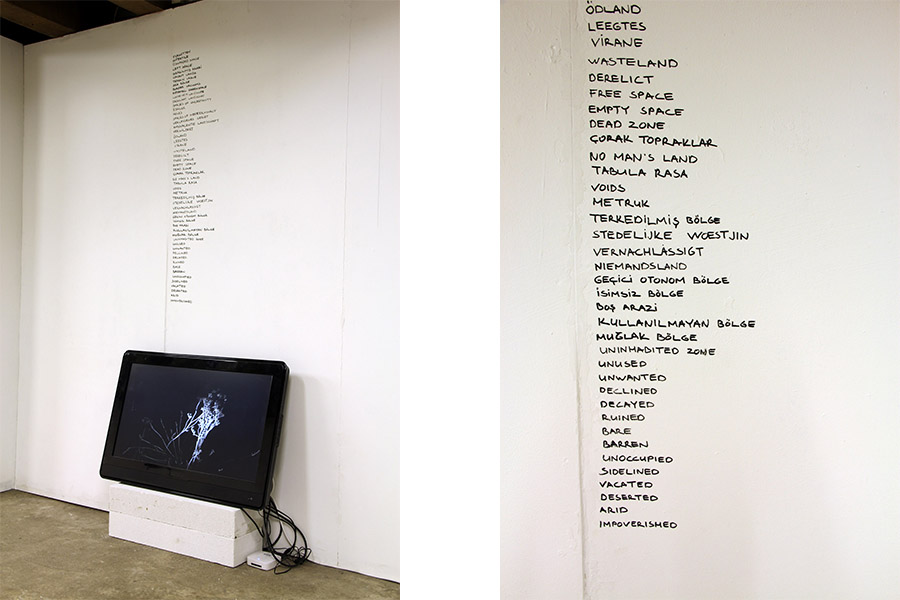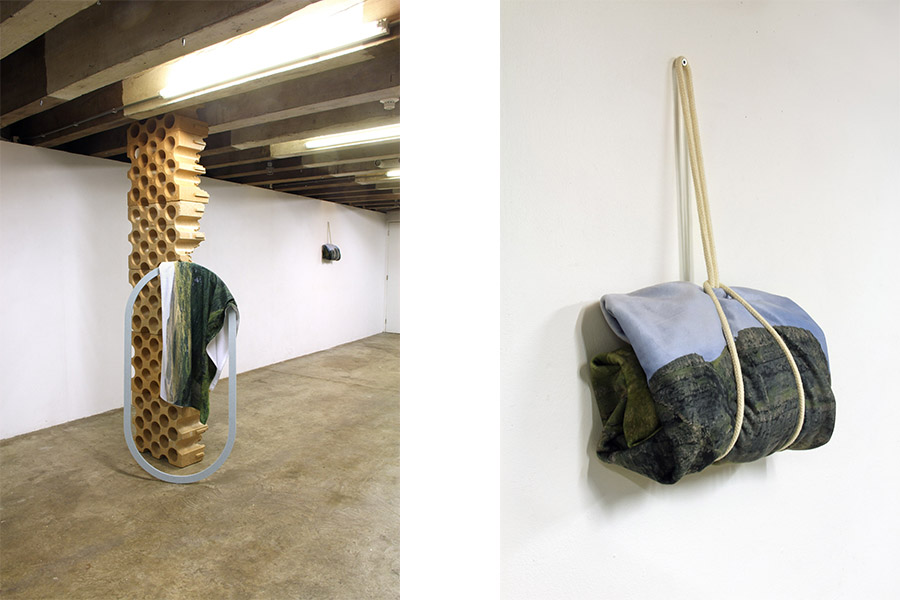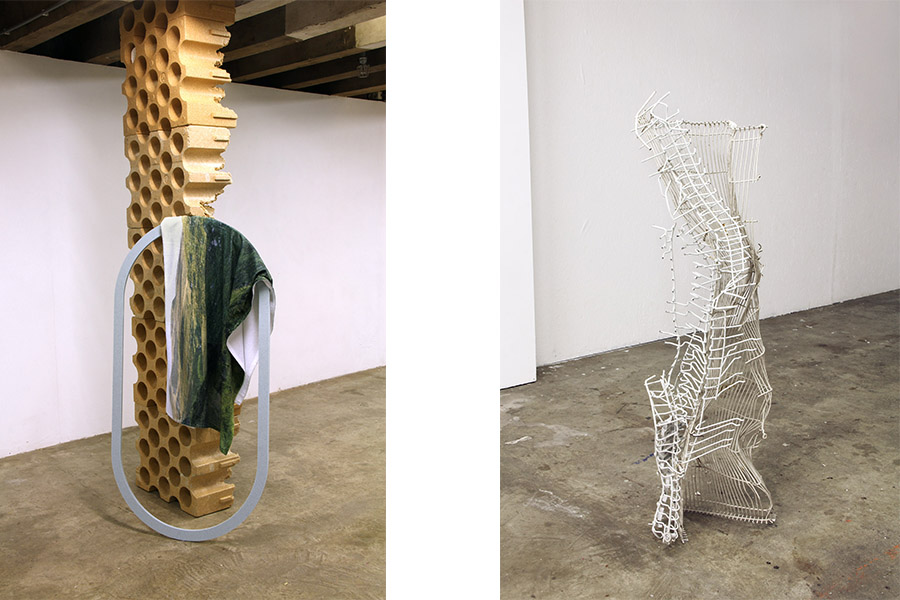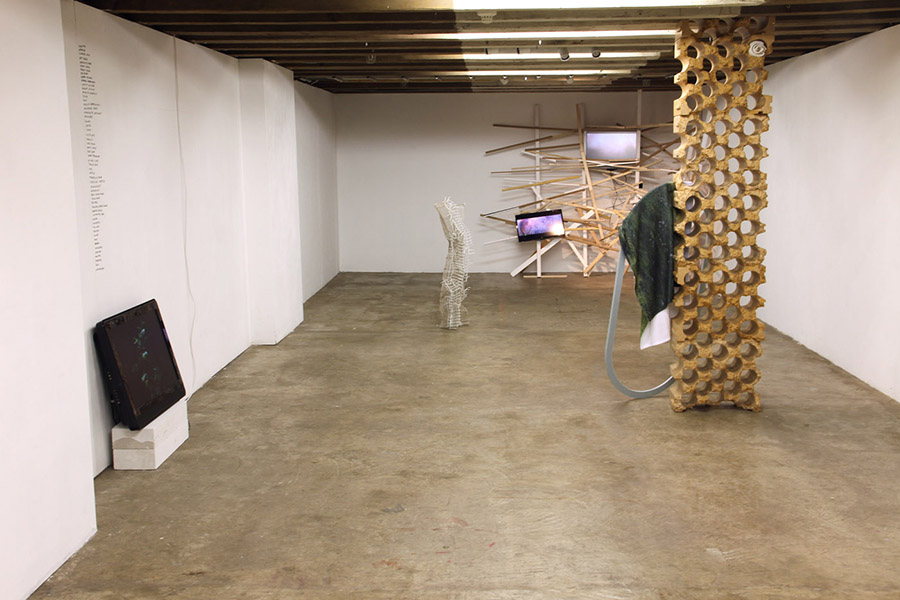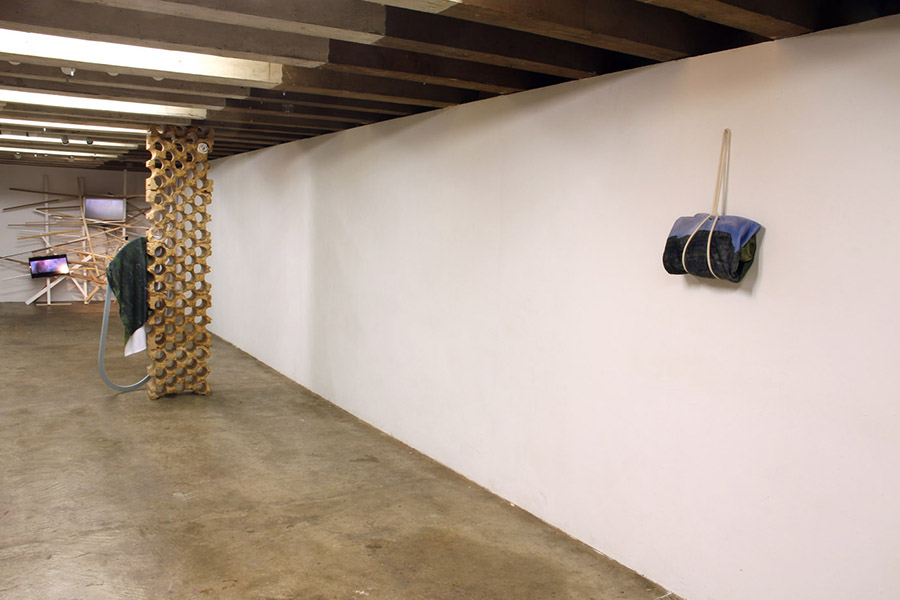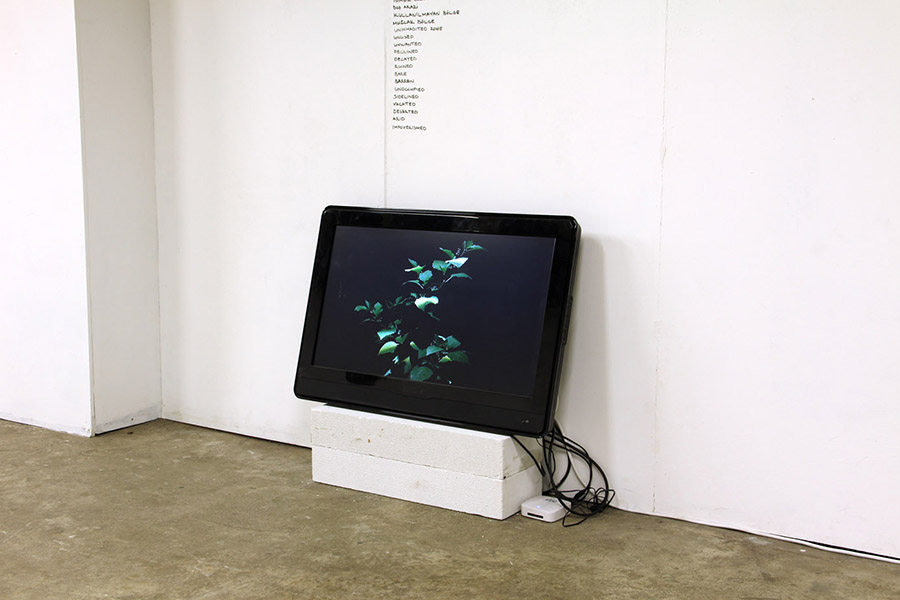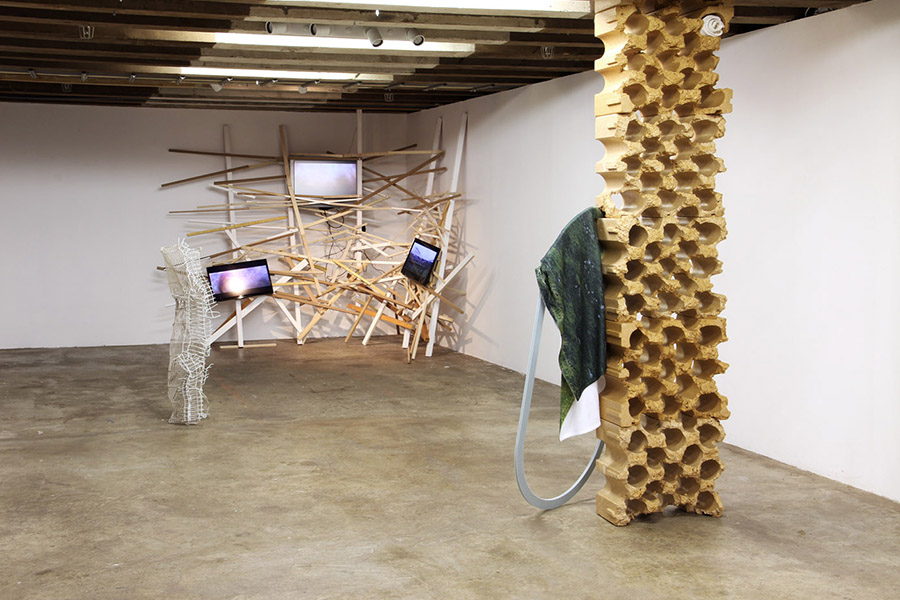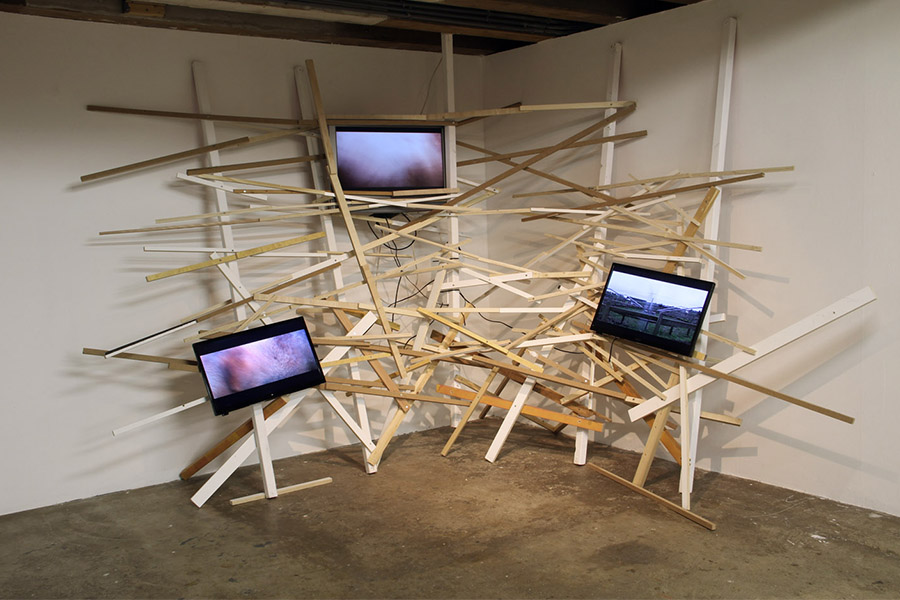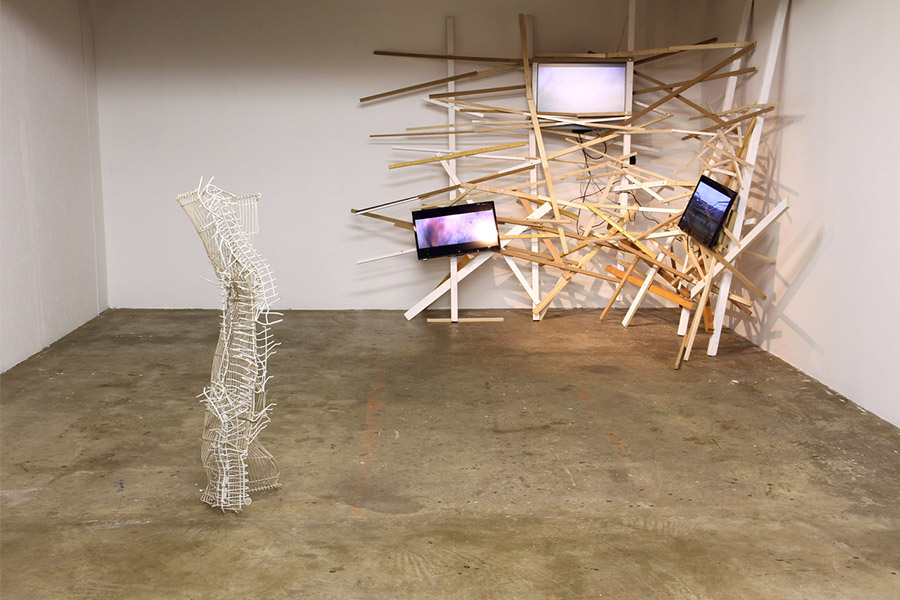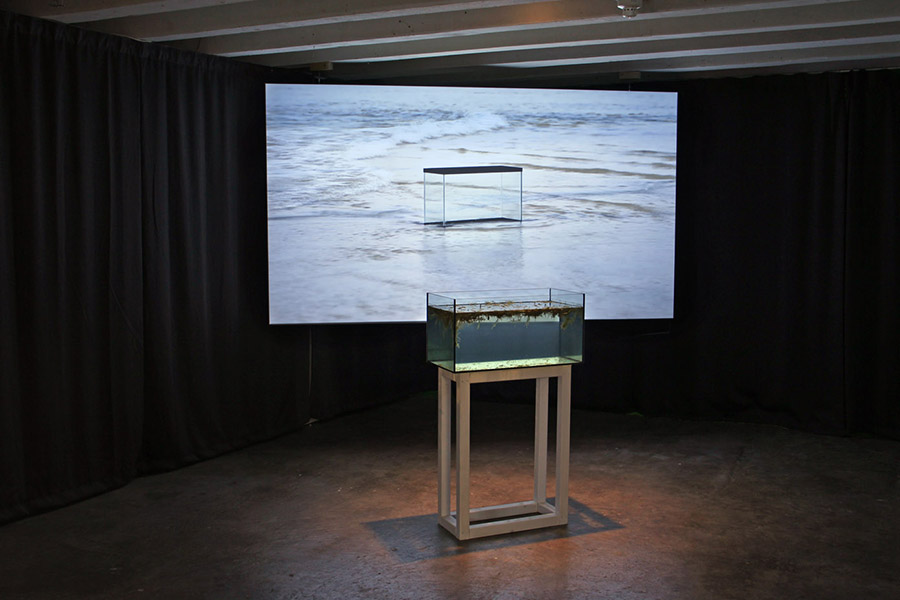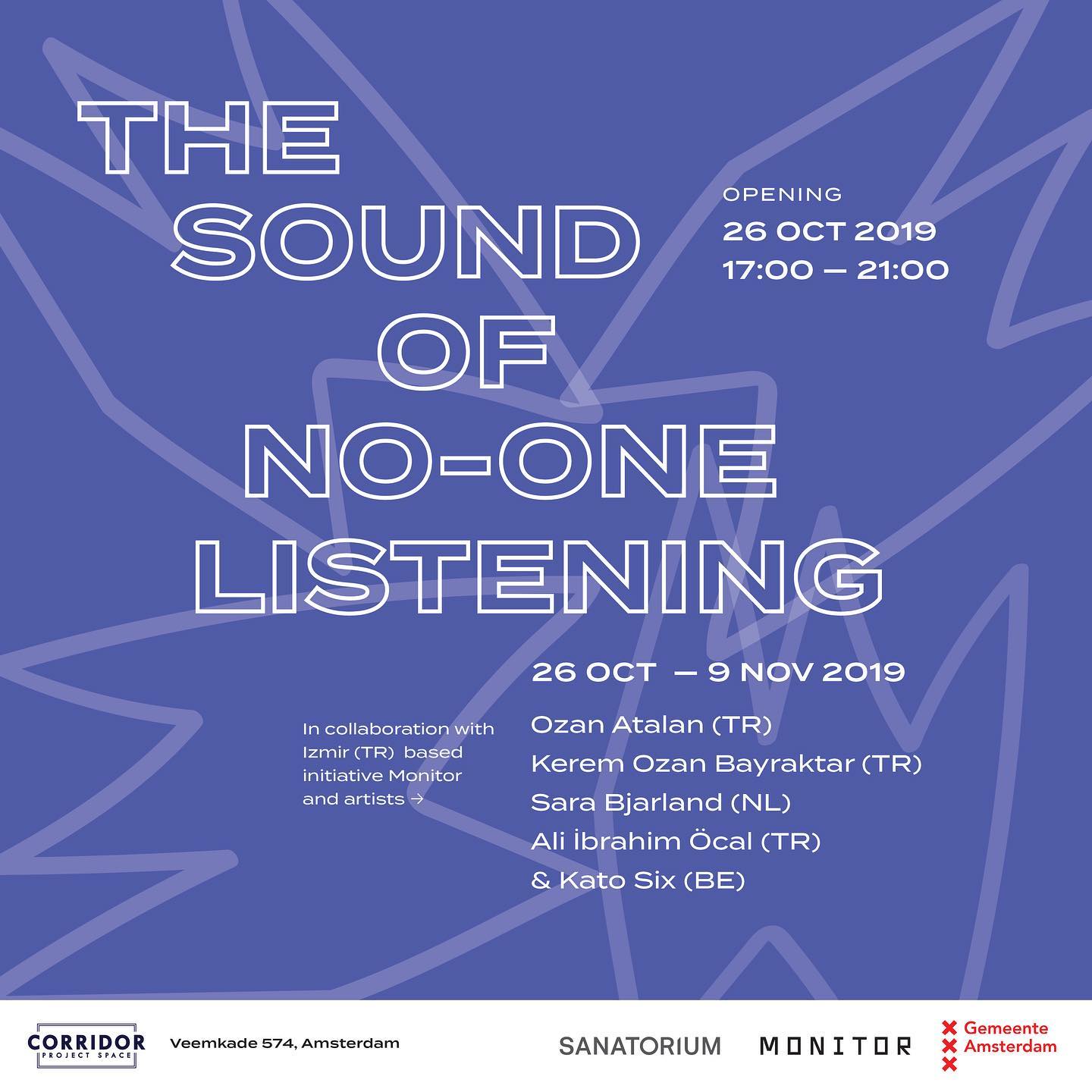Photo Credit: Sara Bjarland
Please scroll down for English
Corridor PS – Monitor
The Sound of No-One Listening
Corridor Project Space, In Your Own Backyard serisinin dördüncüsünde Monitor ile işbirliği yapıyor. Ozan Atalan, Kerem Ozan Bayraktar, Sara Bjarland, Ali İbrahim Öcal ve Kato Six’in çalışmalarının bir araya getirildiği “The Sound of No-One Listening” başlığını taşıyan sergi, 26 Ekim – 9 Kasım tarihleri arasında Corridor Project Space’de ziyaret edilebilecek.
“Nedir bu insan? Ruh üzerinden yeryüzüne yayılan bir yığın hastalık: avlanmak isterler orada.
Nedir bu insan? Bir aradayken nadiren barış içinde yaşayan yabani yılanlardan oluşan bir yumak – kendi başlarına giderler uzaklara ve av ararlar yeryüzünde.”
Var olduğu farklı yüzyıllar boyunca insan, değişen arzularıyla yeniden şekillendirdiği dünyasının fonunda, tüm canlıları birer objeye dönüştürdü. Tarım, sanayi ve bilgi toplumlarının birbirine geçiş sürecinde ve sonrasında insanın istekleriyle birlikte yetileri de değişime uğradı. Yetilerinin bazılarını kaybederken yerine yeni beceriler kazanan insanın kazandığı her şey farklı boyutta kayıplara yol açtı.
Kaybetmekten en korktuklarından biri, zamandı. Zamandan tasarruf edebilmek için geri kalan her şeyi hızlandırdı. Artık tohum, toprağın altında dilediğince bekleyemeden, modern insanın zaman biriminde gün yüzüne çıkmaya mecbur bırakılıyor. Her şeyi yönetebildiğini düşünen insan, eline geçiremeyeceği belki de tek şey olan zamana hükmetmeye çalışıyor. En “verimli” şekilde organize olduğunu sandığında bile yetersiz kalıyor. Peki zamanın akışından insan çıkarılsaydı, zaman, yetişilmesi ve kazanılması gereken bir olgudan uzaklaşıp doğanın parçası haline gelir miydi?
Ozan Atalan, Default Settings: Dasein isimli çalışmasında, ölçüt olarak doğayı ele alarak zamanın alternatif versiyonunu sunar. Atalan, Pasifik Okyanusu’na yerleştirdiği akvaryuma vuran dalgalarla, doğanın ritmini yakalamaya çalışır. Rüzgârın dalgaya dönüştüğü enerji, bize gerçek zaman dilimini sunarken, insan eliyle icat edilmiş olanın, doğanın taklidinden ibaret olduğunu anımsatır.
“Arzularımızın her biri dünyayı yeniden yaratır, düşüncelerimizin her biri de yok eder. Gündelik yaşam içinde kozmogoni ve kıyamet birbirini izler: Günlük yaratıcı ve yıkıcılarız, ezeli mitosları son derece küçük bir ölçekte hayata geçiririz; anlarımızın her biri de, Sonsuz’un payına düşen döl ve kül yazgısının bir taslağıdır ve bu yazgıyı yeniden üretir.”
Sara Bjarland’ın çalışmalarının temelini, insanların her arzusunda yeniden kurdukları dünyadan artakalanlar oluşturur. Bazen, bulunduğu evi artık yeterince güzelleştirmeyen kurumuş bir ev bitkisi, bazen ise yenisi geldiği için gözden çıkarılan bir mobilya, Bjarland’ın kurduğu insansız dünyada yeniden yaşam bulur. Sanatçının çalışmalarında, atık eşyalar, onlara atfedilen anlamlardan ve nesne hallerinden belki de ilk kez sıyrılarak başka bir hikâyenin karakterlerine dönüşürler. Bjarland, sergide yer alan çalışmasında, mitolojide ölümsüzlük sembolü olarak kullanılan sarmaşığı, içinde bulunduğumuz dünyanın koşullarında yeniden yorumlar. Yaşadığımız dünyada sarmaşık, insanın doppelgängeridir. Sarıldığı ağacı içten içe kurutan sarmaşık gibi, insan yaşamını hazları doğrultusunda sürdürmek için dokunduğu her şeyin sonunu hazırlamıştır. İkisinin ayrıldıkları tek nokta ise sarmaşığın aksine insanın, kuruttuklarının ardından kendisinin de son bulacak olmasıdır.
Kerem Ozan Bayraktar sergide yer alan Nocturne isimli çalışmasında, yol kenarlarında ve kentin muhtelif alanlarında kendiliğinden ortaya çıkan bitkiler üzerinden bir anlatı geliştirir. Gecenin karanlığında geçen video çalışması, bahsi geçen bitkilerin beklenmedik yerlerde sürdürdükleri yaşamlarına ışık tutar. Siren seslerine karışan rüzgârın etkisiyle bulundukları çevreden uzaklara yayılan, yanından geçip gittiğimiz bu canlılar, yalnızca bulunduğu yerin arılığını bozmaya mı yarar? Sanatçının önceki çalışmalarında yer verdiği insan müdahalesiyle yapay yollarla çoğaltılmış doğa yerine, bu kez dişli sistemden insanın çıkarıldığı etkileşim alanlarıyla karşılaşırız. Bu yayılım alanı, faydacılık ilkesini dikkate almaz. Bu tür bir sistemde insanı mutlu eden eylemler değil, yalnızca olacaklar olur. Kendiliğinden gelişmesine rağmen doğal ortamında değilmiş gibi görünen bu canlılar, bitkiler dünyasında karşılaştırıldığında, insanlar arasında belirli bir zümrenin “daha iyi” yaşam sürebilmesi için kötü koşullarda yaşamak zorunda bırakılan kesime benzetilebilir.
Kato Six çalışmalarında bu doğal ortamı farklı yollarla bulmaya çalışır. Dünyada kendimizi evimizde hissetmemiz için nesneleri yeniden yapılandırır. Fakat bunu, insanın benzer tutkusu sonucu doğasından alıkoyduklarıyla değil, yaşam alanımızdaki günlük nesnelere müdahalelerle mümkün kılar.
Ali İbrahim Öcal’ın çalışmalarında yaşam döngüsünün evrelerini görürüz. Çoğu inanışta bağımsızlığın ve gücün simgesi olan atları, insan ve hayvanlar arasındaki ilişkiyi sorgulamak üzere konu edinen Öcal, bu yerleştirmeyi Yunan sanatçı Jannis Kounellis’in İsimsiz (12 At) çalışmasından esinle üretir. Kendi yaşam koşullarını iyileştirme adına insanın, doğadaki canlıları dilediği gibi kullanmasından yola çıkan çalışma, farklı şekillerde tutsak edilerek, özgürlükleri alınan hayvanların, insansız bir dünyada varoluş şekilleri üzerine düşünmemizi sorgular.
The Sound of No-One Listening isimli sergi, dünyaya hükmetmekte beis görmeyen insanın bakış açısından uzaklaşıp, farklı zaman ölçütünün olduğu bir uzamda, doğasından alıkoyulmuşların yaşam alanına sızmaya çalışır. İhtiyaçlarını gidermek için kendi türü dahil herkesi ve her şeyi sömüren, onları hapsedeceği formları ortaya çıkarmada üreticiye dönüşen insanın evrende yer kaplayanlarla parazitizm üzerinden kurduğu ilişkide yardımcı eleman olarak arkaplana atılanların yok edilen doğalarında hayatta kalma hikâyelerine odaklanır.
1 Friedrich Nietzsche, Böyle Söyledi Zerdüşt, Çev. Mustafa Tüzel, Türkiye İş Bankası Kültür Yayınları, 2005, İstanbul, sf. 44
2 E. M. Cioran, Çev. Haldun Bayrı, Çürümenin Kitabı, Metis Yayıncılık, Istanbul, Sf. 71
—
The Sound of No-One Listening
Corridor Project Space cooperates with Monitor in the fourth edition of In Your Own Backyard series. “The Sound of No-One Listening” brings together the works of Ozan Atalan, Kerem Ozan Bayraktar, Sara Bjarland, Ali İbrahim Öcal and Kato Six, and can be visited at Corridor Project Space from October 26th to November 9th.
“What is this man? A mass of diseases that reach out into the world through the spirit; there they want to get their prey. What is this man? A coil of wild serpents that are seldom at peace among themselves–so they go forth apart and seek prey in the world.”
Throughout his/her presence in various centuries, the human turned all living creatures into an object at the background of his/her world they shaped over and over by their altering desires. During and after the intermeshing process of agriculture, industry and information societies, the competences as well as desires of the human have undergone a change. While losing some of the talents, the human being acquired some new skills and all that acquired led to certain losses at various dimensions.
What human feared the most to lose was the time. In order to save time, s/he speeded up all the rest. Now, unable to wait as much as it wishes underground, the seed is forced to come to light in the time unit of the modern human. Considering that s/he can rule over everything, the human tries to dominate probably the only thing that s/he cannot capture: the time. S/he is inadequate even when s/he thinks s/he is organized in the most “productive” way. If the time were to be freed from the flow of the human, would it move away from being a phenomenon to catch and save, and become a part of the nature?
In his work Default Settings: Dasein, Ozan Atalan presents a different version of time taking the nature as the criterion. Atalan tries to catch the rythm of the nature through the waves that hit the aquarium that he has placed in Pacific Ocean. The energy produced by the wind turning into wave gives us the real time period, while reminding us that the human-invented time is just about an imitation of nature.
“Each of our desires re-creates the world; each of our thoughts destroys it. Cosmogony and apocalypse follow each other in daily life: We are daily creators and destroyers, we actualize eternal myths in an extremely small scale; and each of our moments is a sketch of the destiny of seed and ash that falls to the share of the Eternal, and re-produces this destiny.”
The remnants of the world that is constructed over and over with each desire of the human, underlies the works of Sara Bjarland. Sometimes a dried house plant that cannot embellish its house any more, and sometimes a furniture dismissed as it is replaced by a new one, springs to life in the human-free world of Bjarland. The waste materials move away from their attributed meanings and forms maybe for the first time, and turn to characters of another story in the artist’s works. In her work at the exhibition, Bjarland re-interprets the ivy, which was used as symbol of immortality in mythology, within the conditions of the world we live in. In the world we live in, the ivy is the doppelgänger of the human. Like the ivy drying the tree she has surrounded inwardly, the human has prepared the end of everything s/he has touched for the sake of leading a life in pursuit of her/his pleasures. The only point the two depart is that contrary to the ivy, the human shall also end up after all that s/he has dried.
In his exhibition work entitled Nocturne, Kerem Ozan Bayraktar develops a narrative basing on plants that grow by themselves on the roadside and various areas of the city. The video work of Bayraktar sheds light on the life of these plants in unexpected places in the dark of the night. Do these living beings, that spread out to far from their original places with the effect of the wind intermingling with the sound of sirens, only destroy the pureness of the places they exist in? In this work of the artist, we come across interaction areas where human is excluded from the geared system instead of a nature multiplied artificially by human intervention that existed in previous works of the artist. This area of dispersion does not take into account the principle of utilitarianism. In such a system, what makes a person happy is not the actions but only upcoming incidents. Though grown naturally, these living beings seem not to be in their natural environment. These plants can be compared to people who are obliged to live in bad conditions so that members of a particular class shall be able to lead a “better life”.
Kato Six tries to find this natural environment in different ways in her works. She re-structures objects in order to make us feel at home in the world. This, she makes possible with not what human has retained from nature with similar passions, but with intervening in objects we use daily in our living space.
We see the stages of the life cycle in Ali İbrahim Öcal’s works. The horses that are symbols of independence and power in most beliefs are his subject for questioning the relationship between human and animals. He produces this installation with the inspiration he derived from the Greek artist Jannis Kounellis’ work Unnamed (12 Horse). The work is based on the idea that the human uses the living beings in the nature the way s/he desires in order to improve his or her living conditions, and calls us to contemplate on how animals, enslaved and deprived of their freedom in different ways, would exist in a human-free world.
The Sound of No-One Listening exhibition tries to move away from the perspective of human who does not consider it harmful to rule over the world and to leak into the living space of those that are deprived of their nature in a space with a different time criterion. The human exploits everything, including his/her own kind, and turns to a producer in finding out forms to imprison them in order to satisfy his/her needs. The exhibition focuses on the survival stories of those who are pushed to the background as an assistant in the relationship the human has constructed with the survivors of the universe basing on parasitism.
1 Friedrich Nietzsche, Böyle Söyledi Zerdüşt, Çev. Mustafa Tüzel, Türkiye İş Bankası Kültür Yayınları, 2005, İstanbul, sf. 44
2 E. M. Cioran, Çev. Haldun Bayrı, Çürümenin Kitabı, Metis Yayıncılık, Istanbul, Sf. 71
